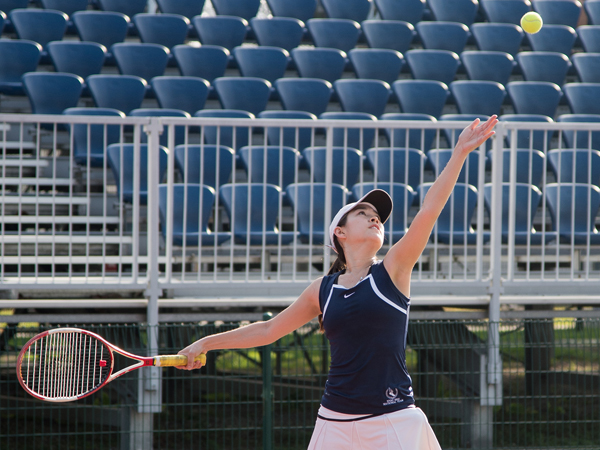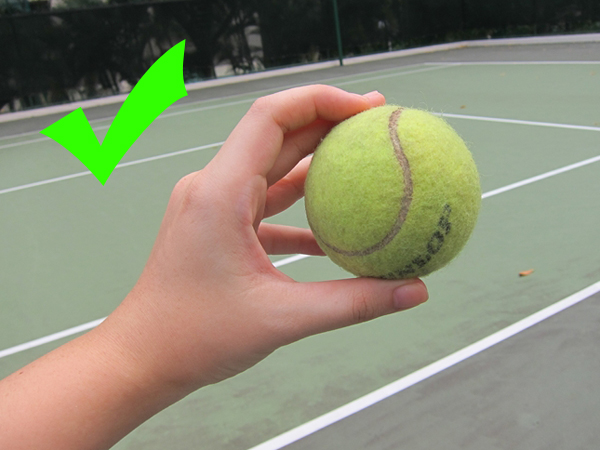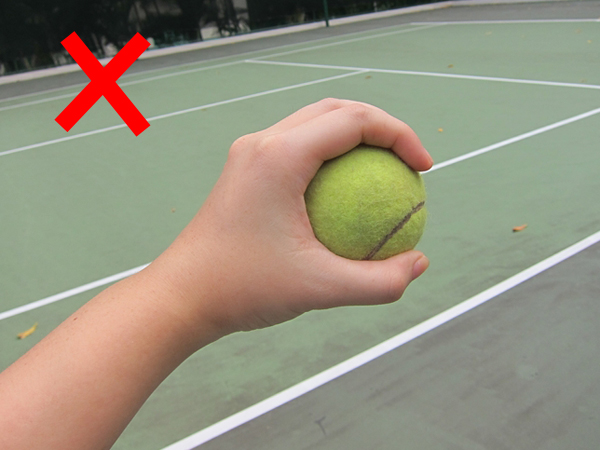How to improve your Tennis Serving technique in 5 easy steps

File Photo Credit: Wei De/SportSG
By Laura Chan
There is nothing more demoralizing than performing a failed serve even before you begin an actual Tennis rally. A failed serve also negatively affects the outcome of the game - a point is lost to the opponent from the failure to successfully serve twice, also known as a double fault.
The tennis serve is a fairly challenging stroke, that requires a precise sense of timing and good hand-eye coordination. The following aims to be a comprehensive step by step guide on how to serve in tennis for beginners.
Step 1: Correct your Service Stance
In tennis, the ball is served diagonally across to the opponent’s service court. A good way to decide a serving position is to align your body in a straight-line in the intended direction of your serve. In a serve, both feet have to be behind the baseline, with the left foot pointing far right or towards the right net post, and the right foot parallel to the baseline. The toes of your back foot are usually inline with the heels of your front foot to achieve stability in all directions once you execute the full-service motion.
Step 2: Use the Right Serving Grip
The two most common grip types in serving are the Continental grip and the Eastern Forehand grip.
Right way to hold the ball while serving.
Right way to hold the ball while serving.
What is the Eastern Forehand grip?
Beginners tend to find the Eastern Forehand grip more comfortable and natural. Serves with this grip tend to hit the ball flat, without any spins. However, flat serves offer lower clearance over the net.
What is the Continental grip?
The Continental style is another option for consideration in a grip for serving. Besides higher net clearance from the Continental style’s topspin, it encourages fundamental habits such as full extension and natural pronation.
Step 3: Know the Serving Toss
A good distance to do a toss would be the space in between your legs as there is a greater likelihood of hitting the ball with lesser timing precision required as compared to tossing it from an arms-length distance.
The direction of a toss may not go in a vertical direction, but in a diagonal one, towards your right, or your left, depending on your dominant arm. This will put the ball in a convenient position for your dominant arm to strike the ball.
Both a high and low toss have its advantages in catching opponents off guard. However, beginners should focus on having a consistently successful serve before anything else.
A common mistake made by beginners is tossing the ball with the palms, rather than their fingertips. The Tennis ball should be held by the fingers in a pincer-like grip and with all fingers losing contact with the ball at the exact moment when the ball is released.
Step 4: The Serving Motion
Preparation for the serve
In preparation for the serving motion, bend your knees slightly so that your legs will generate enough force as they drive upwards.
Wind-Up for the serve
A wind-up is a preparatory move in serving, involving the swinging of the arms. In a wind-up, the swing begins with elbows bent upwards, the racket swung to the back, followed by the straightening of the arms and the snapping of the wrist.
A wind-up is not necessary in a serve but will be essential in many other strokes. If executed well, a wind-up generates more power in a serve.
Contact with the tennis ball
A contact means the time when the ball hits the racket.
Before contact, using the power generated to your legs and arms, fully straighten your elbows and your forearm should be in a vertical position as well.
The ball should come in contact at the middle of the racket.
After contact, your racket should be brushing in an upwards direction with your wrist stretching forward with the racket facing the same direction as the ball.
What is Pronation in tennis?
Tennis serves pronation is one of the key factors that separates a professional and amateur tennis player. In a nutshell, the pronation is a technique of the rotation of the arm and wrist that guarantees a flat racket head to achieve more speed and power. However, a pronation doesn’t have to be forced because it usually happens naturally as a result of the forces generated by other parts of the body during the serve.
Step 5: Follow Through
Use a good and relaxed follow through to complete the service motion. A good indication for right handers would be having the racket head finishing close to your left hips. The follow through will allow muscles to slow down in a natural and relaxed way without stressing the elbow joint or shoulder.
Additional tip for upping your service game
Many professionals would recommend striking the ball when it is close to or at its highest point. However, to achieve a consistent serve, it ultimately depends on what feels the most natural for you.
Are you a kid trying to learn the basics to tennis? Or perhaps a parent trying to introduce your child to the game of tennis? At the ActiveSG Tennis Academy, we are serving up an ace when it comes to learning and enjoying the game. With a structured pathway to unleashing potential, our students have an opportunity to enjoy playing tennis before learning to play at the highest level.
Helmed by professional coaches, our students are engaged at every level of development. From fundamental movement skills to core tennis skills, the programmes are designed to be fun, yet challenging. Sign up for the ActiveSG Tennis Academy by registering here.
To receive the latest updates on the happenings in the Singapore sports scene, or to find out more about some of the latest programmes on offer at ActiveSG, like our Facebook page here.







![ActiveSG Academies and Clubs Logo (Solid Colour)[8647]](https://www.activesgcircle.gov.sg/hs-fs/hubfs/ActiveSG%20Circle%202023Theme/images/ActiveSG%20Academies%20and%20Clubs%20Logo%20(Solid%20Colour)%5B8647%5D.png?width=150&height=65&name=ActiveSG%20Academies%20and%20Clubs%20Logo%20(Solid%20Colour)%5B8647%5D.png)



-01.png?width=200&height=141&name=Team%20Singapore%20Logo%20(Red)-01.png)



